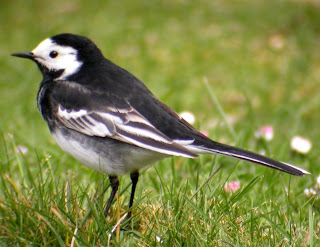Hilly Fields Survey National Survey
1. Starling 1. House Sparrow
2. House Sparrow 2. Starling
3. Black-headed Gull 3. Blue Tit
4. Common Gull 4. Blackbird
5. Goldfinch 5. Chaffinch
6. Ring-necked Parakeet 6. Woodpigeon
7. Blackbird 7. Goldfinch
8. Woodpigeon 8. Great Tit
9. Blue Tit 9. Robin
9. Greenfinch 10. Collared Dove
9. Magpie 11. Dunnock
10. Carrion Crow 12. Magpie
10. Chaffinch 13. Long-tailed Tit
10. Feral Pigeon 14. Greenfinch
10. Great Tit 15. Feral Pigeon
10. Jay 16. Coal Tit
10. Long-tailed Tit 17. Jackdaw
10. Robin 18. Carrion Crow
11. Mistle Thrush 19. Wren
11. Wren 20. Common Gull
12. Dunnock 21. Pheasant
12. Great Spotted Woodpecker 22. Song Thrush
12. Pied Wagtail 23. Bullfinch
The six birds which are on our list but not in the national Top 23 are: Black-headed Gull (a very common winter bird in London), Great Spotted Woodpecker (no. 24 on the national list!), Jay, Mistle Thrush, Pied Wagtail and Ring-necked Parakeet. The pesky Parakeet is still predominantly a Southern England bird and, in London, most common south of the river.
The six birds which are in the national Top 23 but not on our list are: Bullfinch, Coal Tit, Collared Dove, Jackdaw, Pheasant and Song Thrush. These can all be seen in the London area with varying degrees of frequency. Locally, Song Thrushes can be seen/heard in Brockley Cemetery and Brookmill Park, Jackdaws in Greenwich Park (when not closed for the Olympics) and I've seen a Collared Dove on top of a bus shelter in Hilly Fields Crescent but forgot to record the date!
The national RSPB survey has drawn attention to the 79% decline in Starling numbers recorded since the Big Garden Birdwatch began in 1979. In fact, both the House Sparrow and the Starling - despite still being the two most recorded birds in our gardens and parks - have declined so much numerically that they are now on the IUCN Red List of Threatened Species. Hopefully, both populations will at least stabilize.
.JPG)

